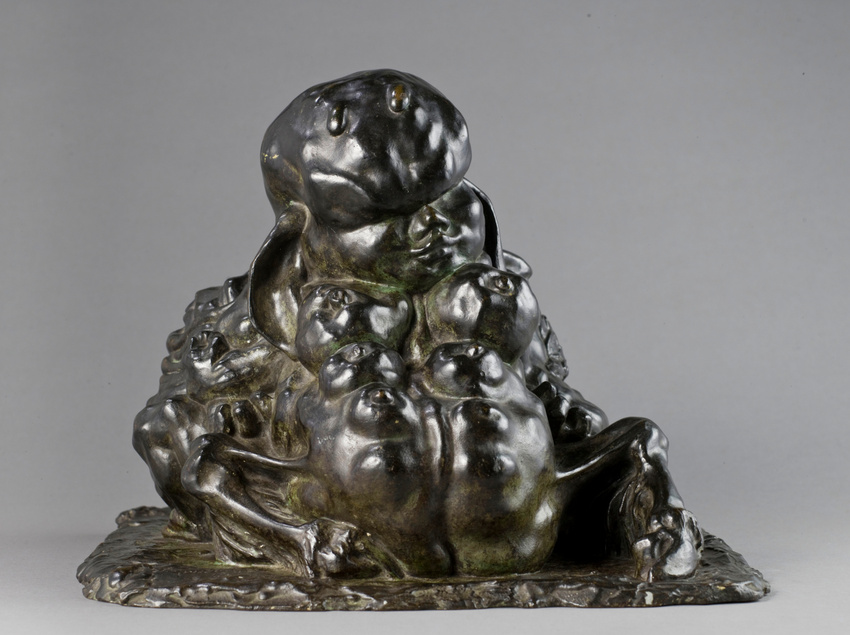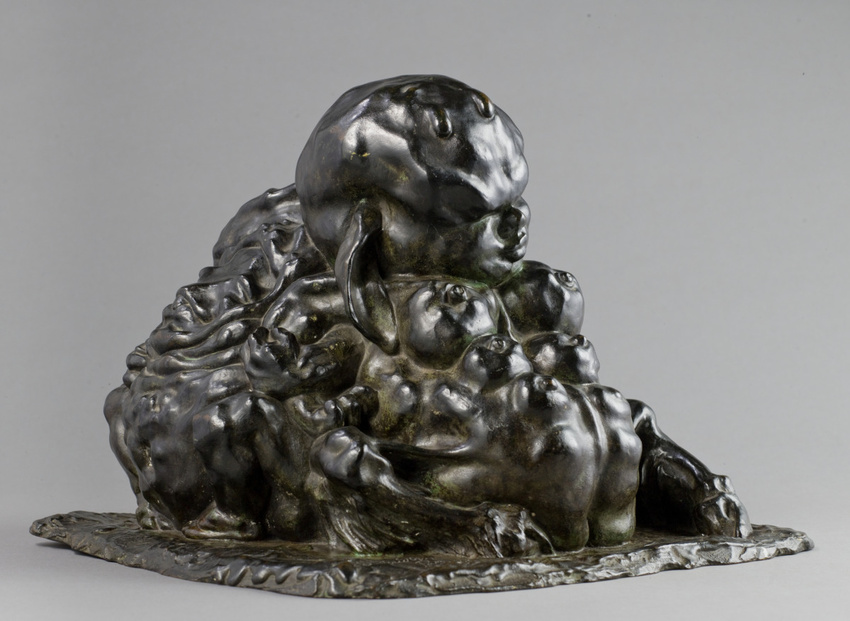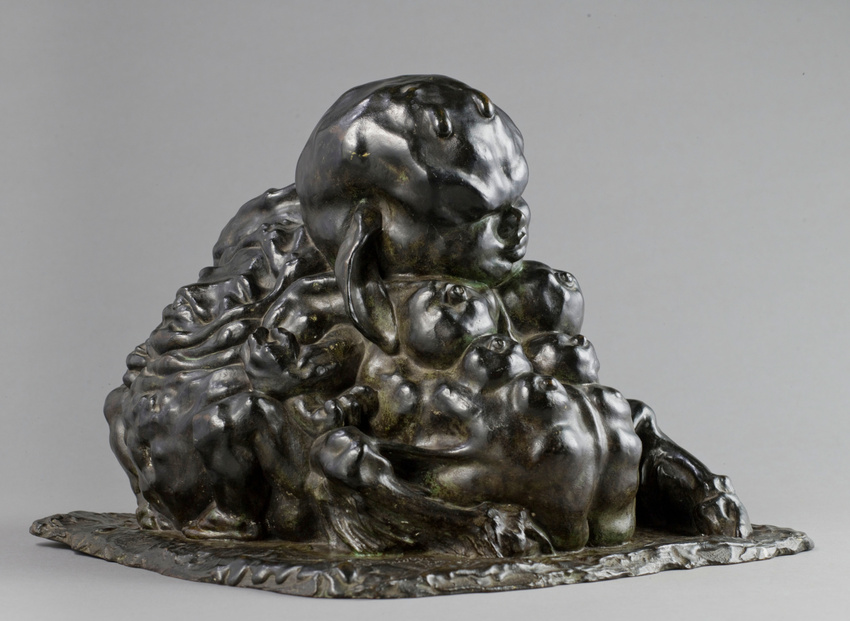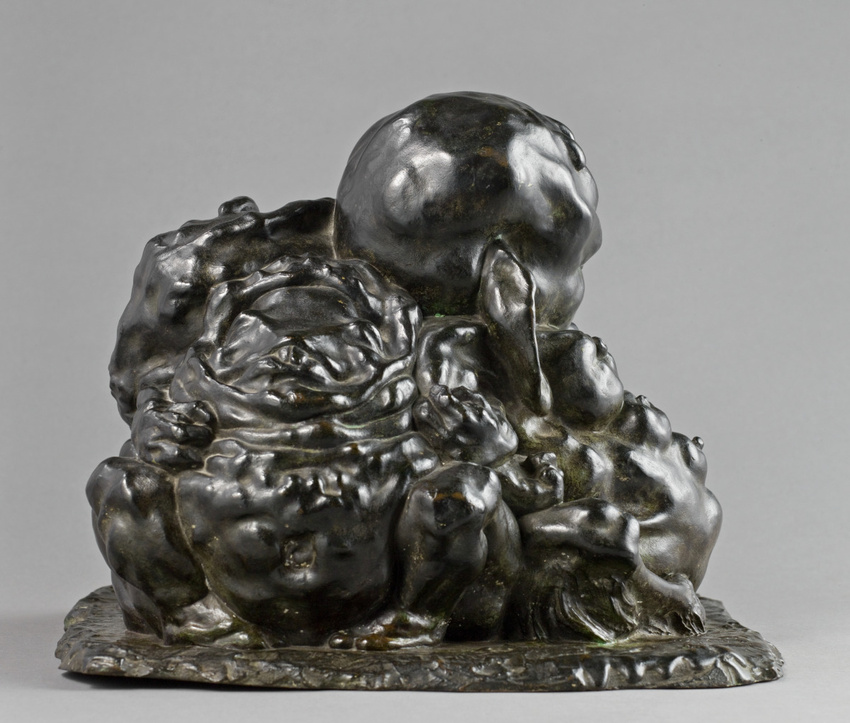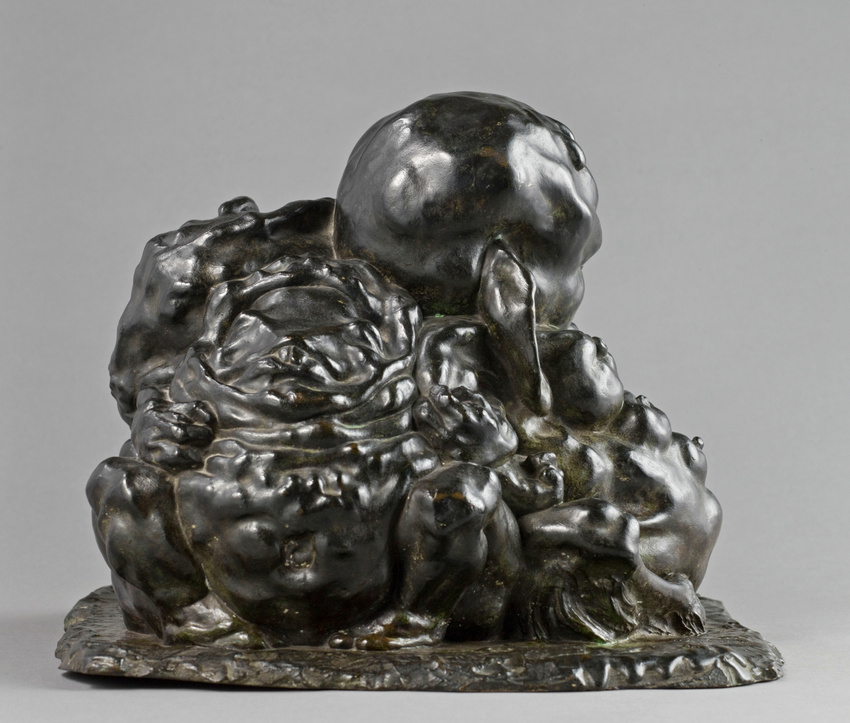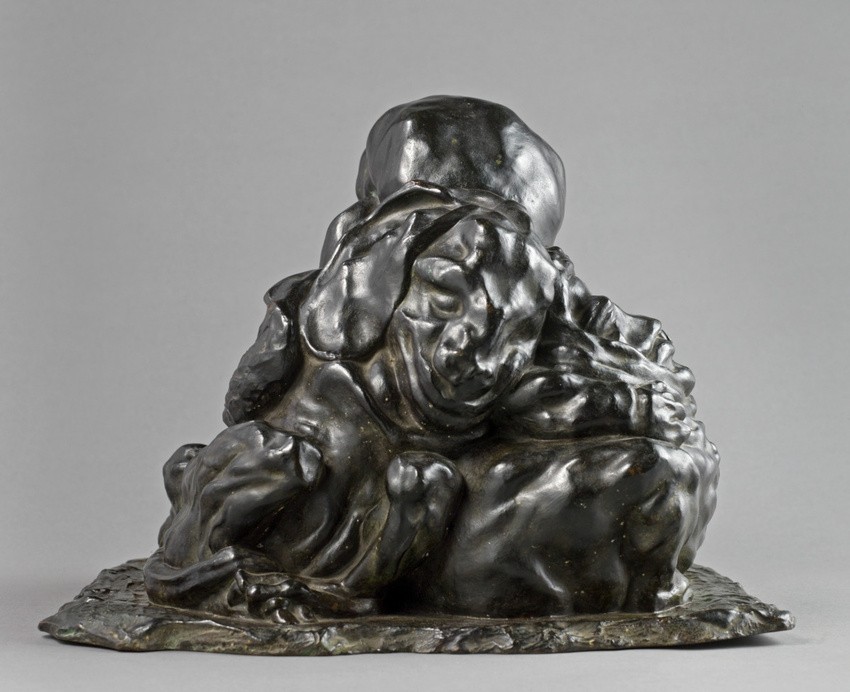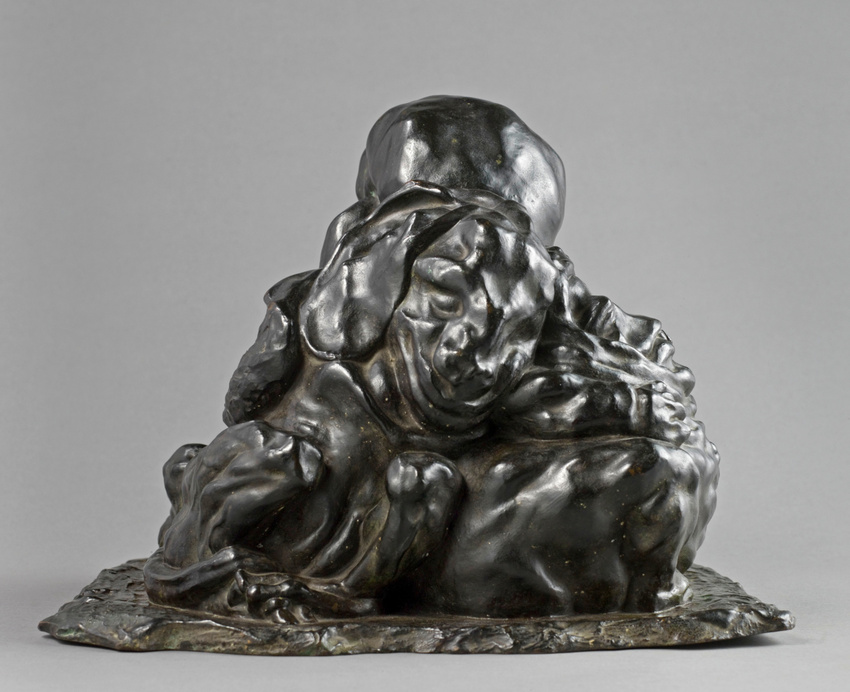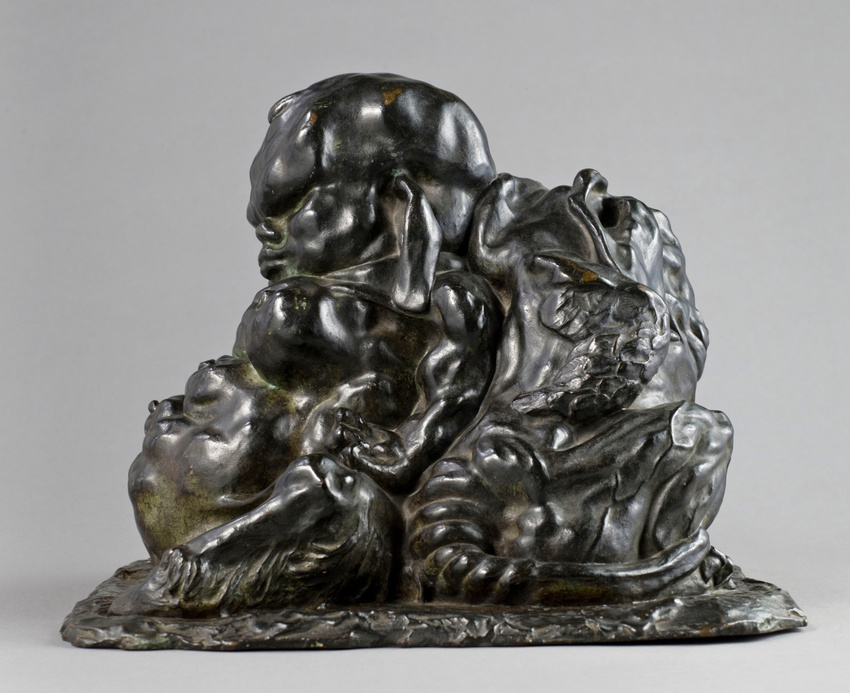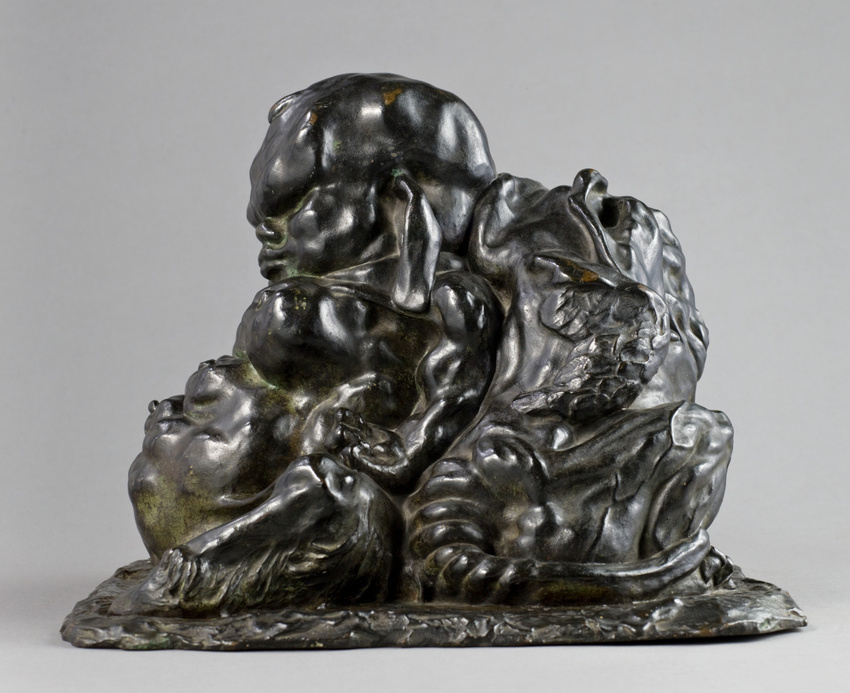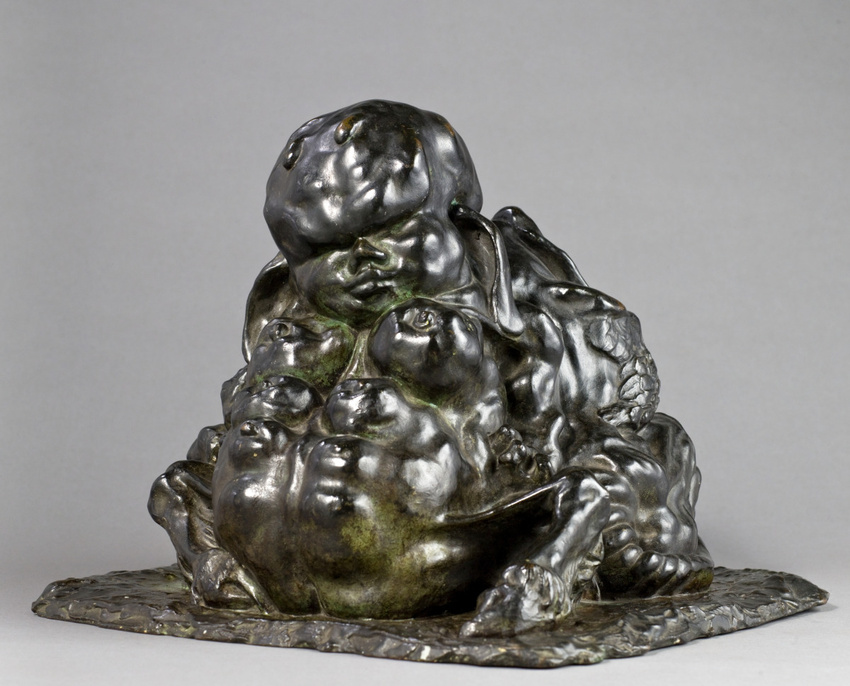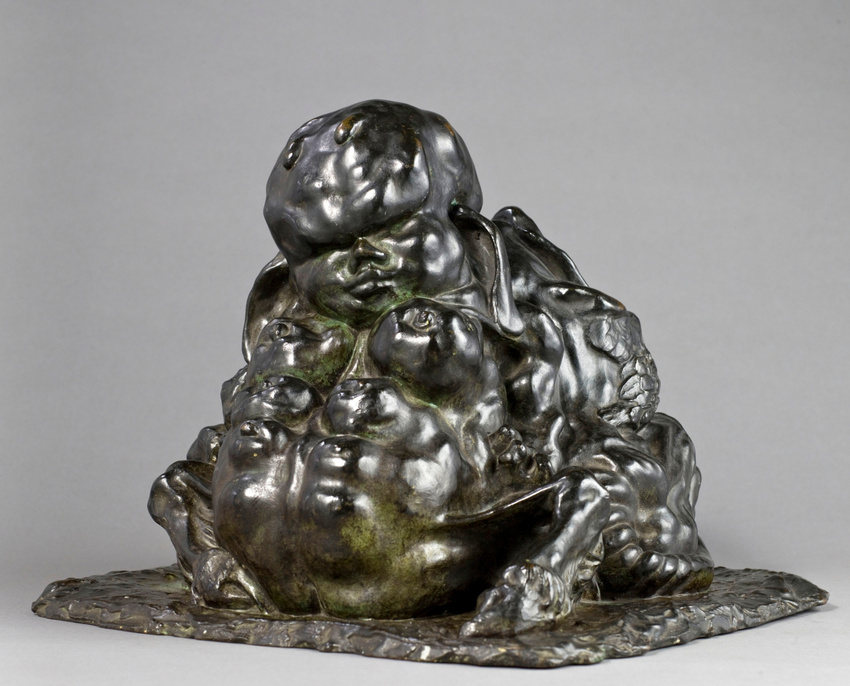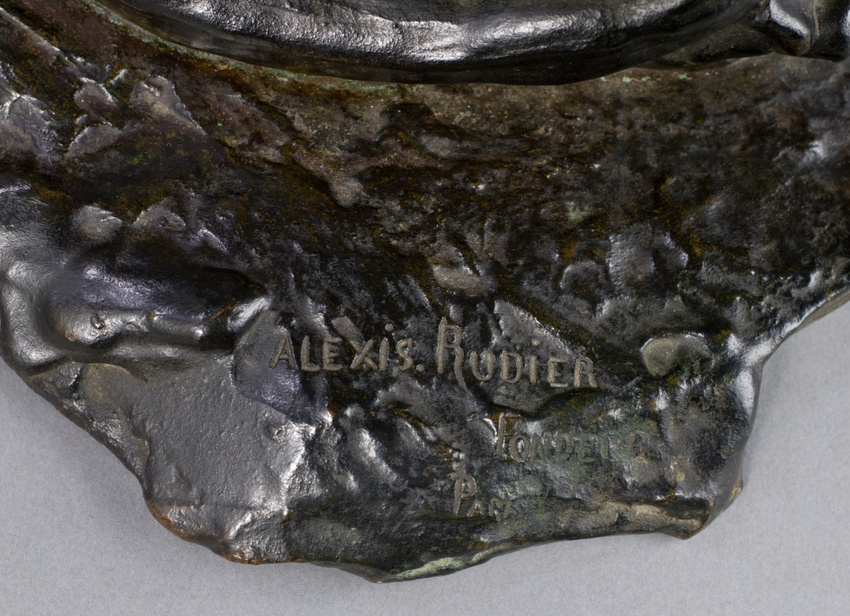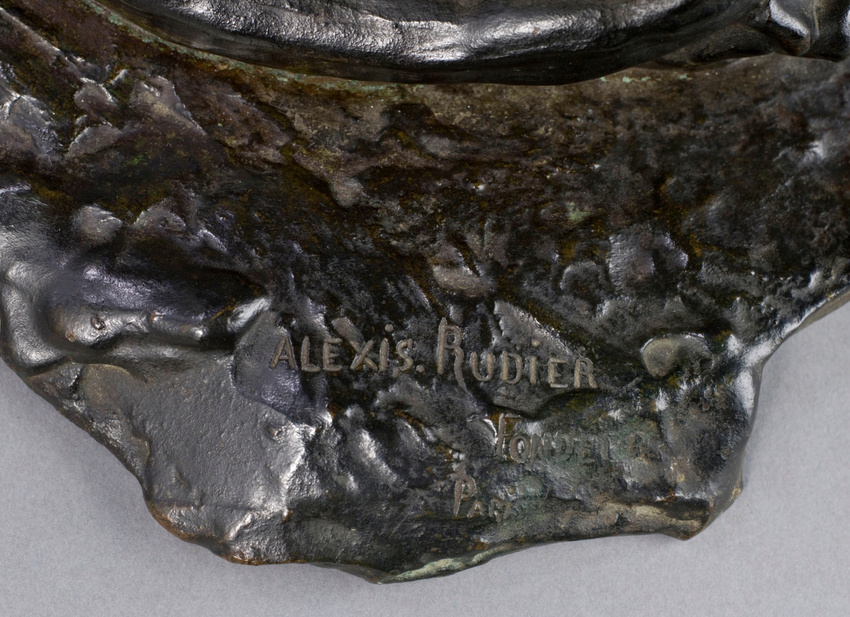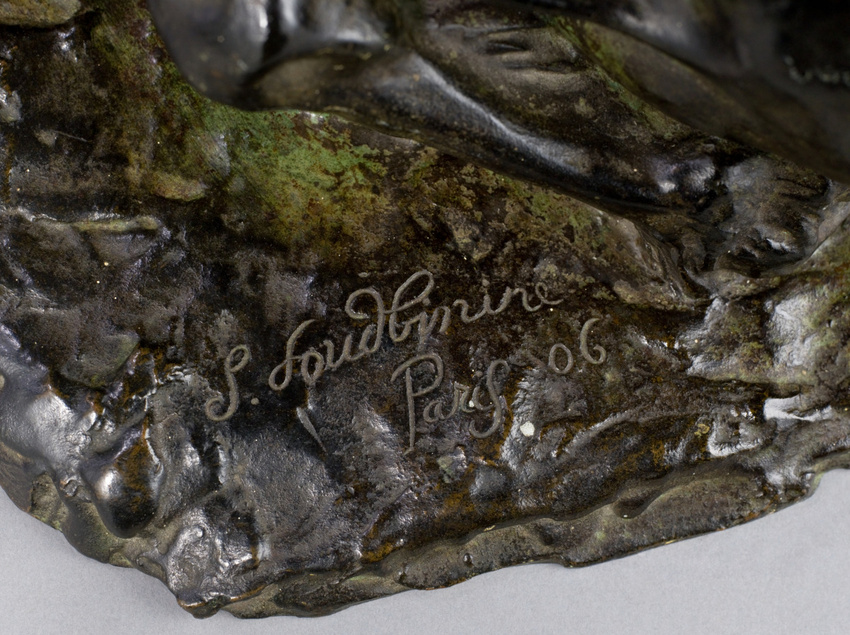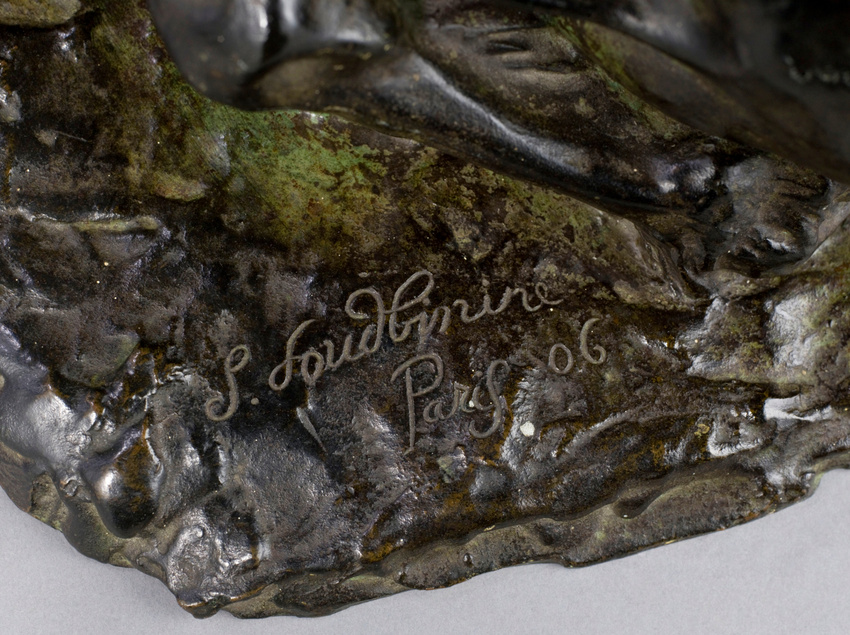Les Monstres endormis
It was at the Autumn Salon in 1906 that Soudbinine, a Russian sculptor who had moved to Paris in 1902, exhibited his Sleeping Monsters in public. This work was possibly part of a trilogy, as on this occasion it was accompanied by two other bronzes: Monsters in Love and Furious Monsters.
Here, three hybrid monsters are snuggled up to each other in bestial slumber. The fantastical character and crouching position of these creatures acknowledges the famous stoneware piece of Jean Carriès, Frog-Man (1891, Musée d'Orsay), a being that is half man, half animal. In the Soudbinine group, the central creature has the face of a baby but the drooping ears of a rabbit or a sheep. It is polymastic, (having additional breasts or nipples), its front limbs with goat's hooves have webbed joints reminiscent of frogs, toads and bats.
The two other, smaller monsters have the muzzle of a sheep or a rabbit and small, deformed limbs. For one of them, Soudbinine seems once again to have taken his inspiration from Carriès. It could be a grotesque reference to one of the glazed, stoneware frogs found on the jamb of the plaster model of a Porte monumentale Monumental Door, an unfinished work designed by Carriès between 1890 and 1894. Elements of this door, exhibited at the Petit Palais in Paris since 1904, could well have inspired Soudbinine.
The Sleeping Monsters also evokes, on a much bigger scale, certain netsuke (small objects worn by the Japanese on their belts), then very popular in the west. The composition of the group, its great singularity in the context of early 20th century sculpture, successfully reveals Soudbinine's interest in nightmares and his fascination for the monstrous and the morbid, the disturbing strangeness whose sombre beauty demands to be revealed.

